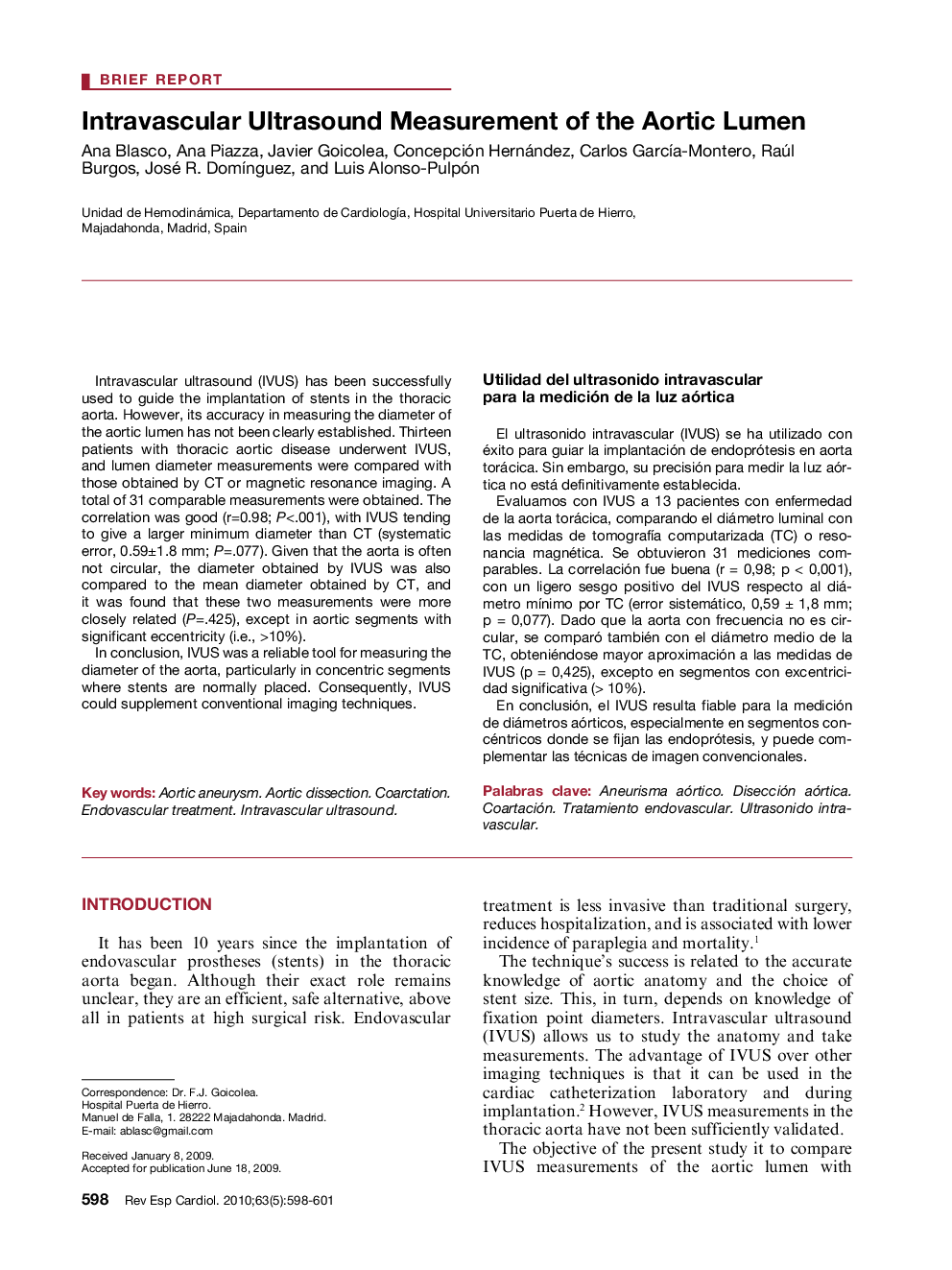| Article ID | Journal | Published Year | Pages | File Type |
|---|---|---|---|---|
| 3017226 | Revista Española de Cardiología (English Edition) | 2010 | 4 Pages |
Intravascular ultrasound (IVUS) has been successfully used to guide the implantation of stents in the thoracic aorta. However, its accuracy in measuring the diameter of the aortic lumen has not been clearly established. Thirteen patients with thoracic aortic disease underwent IVUS, and lumen diameter measurements were compared with those obtained by CT or magnetic resonance imaging. A total of 31 comparable measurements were obtained. The correlation was good (r=0.98; P<.001), with IVUS tending to give a larger minimum diameter than CT (systematic error, 0.59±1.8 mm; P=.077). Given that the aorta is often not circular, the diameter obtained by IVUS was also compared to the mean diameter obtained by CT, and it was found that these two measurements were more closely related (P=.425), except in aortic segments with significant eccentricity (i.e., >10%).In conclusion, IVUS was a reliable tool for measuring the diameter of the aorta, particularly in concentric segments where stents are normally placed. Consequently, IVUS could supplement conventional imaging techniques.
El ultrasonido intravascular (IVUS) se ha utilizado con éxito para guiar la implantación de endoprótesis en aorta torácica. Sin embargo, su precisión para medir la luz aórtica no está definitivamente establecida.Evaluamos con IVUS a 13 pacientes con enfermedad de la aorta torácica, comparando el diámetro luminal con las medidas de tomografía computarizada (TC) o resonancia magnética. Se obtuvieron 31 mediciones comparables. La correlación fue buena (r = 0,98; p < 0,001), con un ligero sesgo positivo del IVUS respecto al diámetro mínimo por TC (error sistemático, 0,59 ± 1,8 mm; p = 0,077). Dado que la aorta con frecuencia no es circular, se comparó también con el diámetro medio de la TC, obteniéndose mayor aproximación a las medidas de IVUS (p = 0,425), excepto en segmentos con excentricidad significativa (> 10%).En conclusión, el IVUS resulta fiable para la medición de diámetros aórticos, especialmente en segmentos concéntricos donde se fijan las endoprótesis, y puede complementar las técnicas de imagen convencionales.
